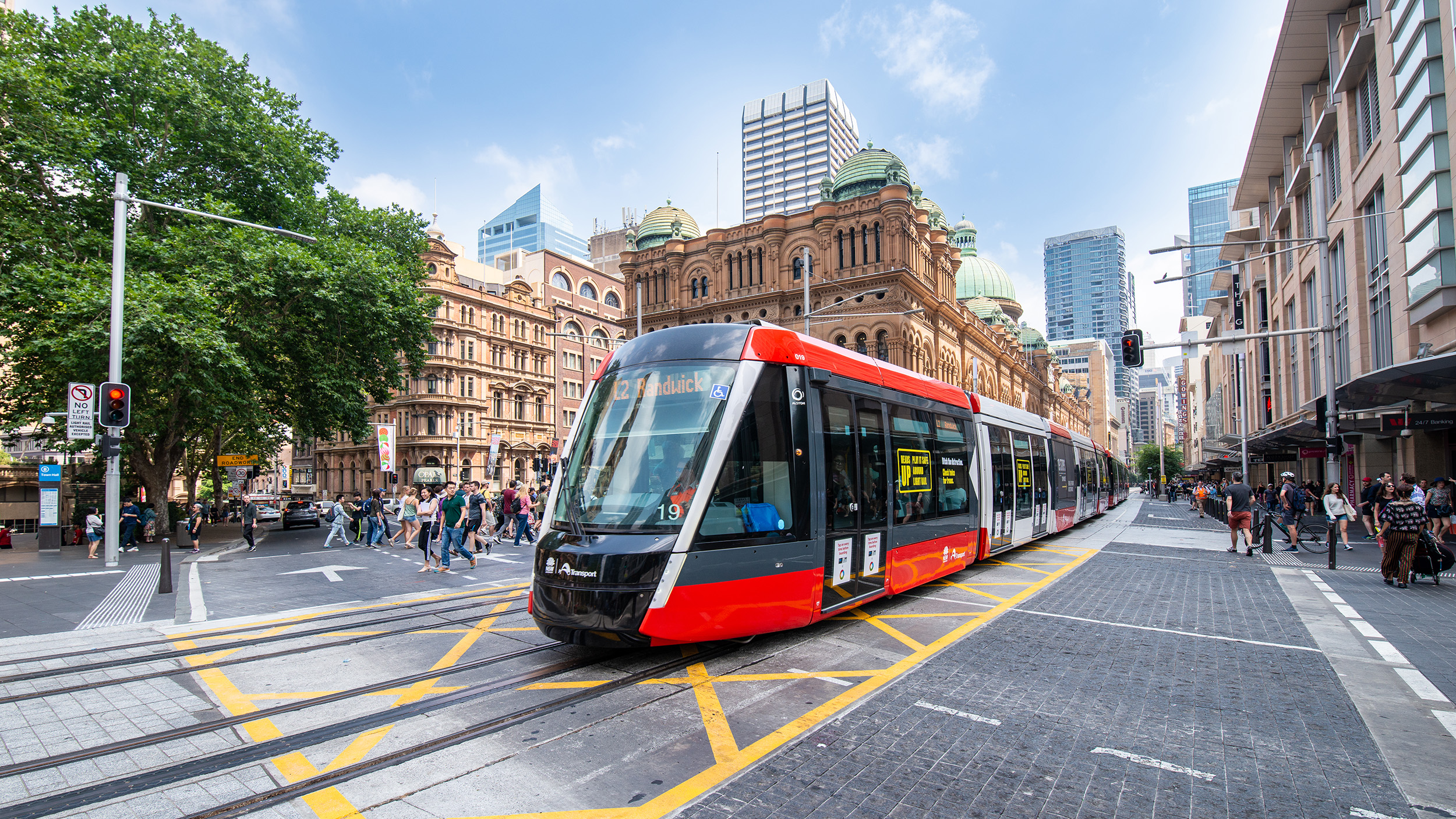
As we continue adapting to the world after lockdown, towns and cities are experiencing different levels of activity. For many office users, the hybrid working model offers an attractive work–life balance.
In Australian state capitals, for example, estimates of commercial office occupancy range between just over 60% to around 80% of pre-lockdown levels.
Given the numbers of workers retiring and a COVID-19 induced border closure on migrants entering Australia in 2020–21, there is a lack of suitably qualified and experienced labour so the job market is favouring employees. As such, this has made employers reluctant to insist on a return to the office five days a week.
Retailers affected by changing work patterns
Historically, economic recessions have frequently led to vacancy and underuse as businesses cease trading. Technological innovation and change often alter building uses as well, resulting in different space needs. The pandemic is the most recent global event to trigger such changes in building use.
Empty and underused buildings physically deteriorate at faster rates than occupied ones. It is not entirely clear what the longer-term changes in commercial building use will be – and even if occupancy does eventually return to pre-COVID levels, there remains a significant amount of unoccupied commercial space in central business districts (CBDs) at any one time.
The underuse of offices means that there is less demand for in-person retail services and less footfall in city cafes. As a result, vacancy in this sector has increased and, in many cases, rents have decreased as revenues for high-footfall retailers have been affected.
In ground-floor retail, underuse and vacancy is highly visible to people on the street, further reinforcing the notion that the city has lost vibrancy. While underuse of office space is less visible at street level, it is very evident to landlords and authorities deriving revenue from public transport.
Although local and city authorities try to run events and initiatives to reinvigorate their communities these are infrequent, and it is clear that ongoing efforts are needed.
Toolkit aims for reuse of vacant or underused stock
The University of Technology Sydney (UTS)'s Sustainable Temporary Adaptive Reuse (STAR) project, funded by the City of Sydney, attempts to fill this gap.
The project is developing an easy-to-use toolkit to help stakeholders select appropriate commercial spaces, investigate the suitability of temporary occupants, and engage in a straightforward way with owners and their representatives.
Stakeholders include owners, investors, building users and local government, all of whom have an interest in leasing, occupying, investing in commercial property, and promoting or enabling viable urban centres.
The project also aims to engage with property professionals and valuation, investment, management, and leasing practitioners, as well as building certifiers, fire engineers and potential end users.
RICS has developed and published valuable materials for professionals in their Sustainability and ESG in commercial property valuation and strategic advice.
The STAR Toolkit is very relevant to RICS members working in valuation, property and facilities management, building surveying or commercial real estate, as they are directly involved in providing professional advice to building owners, investors or leaseholders who want to use such space on relatively short-term bases.
Revitalising communities to attract business
The STAR toolkit can highlight, document, and help create inclusive, people-driven and sustainable communities.
Community engagement can play a vital role in establishing the social value of temporary reuse. This involves fostering inclusivity, a sense of belonging and providing safe and healthful spaces for people. Supporting local businesses and retaining tenants are important considerations.
In a market characterised by relatively high vacancy, even higher levels of unoccupied space and a decentralised workforce, commercial tenants are seeking space that gives them a reason to come into the office.
By using the toolkit, occupants and owners will be able to match available space more easily with alternative, temporary users who can help to create a vibrant, well-occupied building, enhancing the experience of more traditional commercial tenants.
One of the project's aims is to support reactivating Sydney's night-time economy and creating high-impact, time-use cases where CBD attendees have multiple reasons to visit. This can be achieved through various measures such as arts events, revitalisation of ground-level spaces, community or street festivals and child-friendly workplaces.
Incorporating social attributes into the workplace has become important to enable sustainable, adaptive reuse or change of use. Regulations and planning pathways or designations may need to be redefined, and toolkits and resources should be developed to connect prospective social building users with stakeholders.
Collaboration between not-for-profit organisations, local authorities and stakeholders can help bring arts and entertainment user groups into under-used spaces.
Scoring ESG value in commercial stock
In our first stakeholder workshop in Sydney last year, participants highlighted the growing importance of environmental, social and governance (ESG) attributes in commercial property, and the need for an ESG scorecard when assessing potential STAR spaces.
ESG is becoming increasingly important in commercial property valuation and property management and RICS has published a global professional standard with a practical framework for delivering on sustainability and ESG investigation, and reporting requirements in professional valuation advice.
A scorecard is a means of measuring attributes such as the social value of commercial buildings. The STAR ESG scorecard will reflect the diverse aspects of social value.
To create the scorecard, stakeholders including property owners, tenants and industry professionals collaborated at the workshop to give feedback on the initial and additional attributes that researchers had identified in the literature.
The participants also identified 15 additional social factors. They confirmed that social attributes can:
- contribute to community well-being, supporting neighbouring businesses and tenants' ESG contributions
- create a sense of place
- attract new types of user for spaces, including groups that promote upholding human rights
- promote sustainable employment and innovation
- ensure health and safety
- promote diversity and equity
- engage in philanthropy
- help retain tenants
- bring income for building owners, either directly through new or prolonged tenancies or occupants or indirectly thanks to investment prompted by better ESG performance.
Participants suggested additional attributes such as cultural inclusion in design and reactivation, arts and culture, entertainment, positive and inclusive workplace culture, creating dedicated health and well-being spaces, partnerships and co-creation of uses for tenancy, and procurement from social and indigenous enterprises.
These attributes form the basis for evaluating and measuring the social value of commercial buildings.
'RICS has published a global professional standard with a practical framework for delivering on sustainability'
Global cities could benefit from the toolkit
While based in Sydney, the STAR toolkit could also be applied in other towns, cities and countries. The concept is evolving and the need for it is growing around the world, with news reports of unprecedented uncertainty in other markets.
In June, for instance, HSBC announced it is planning to relocate its global headquarters from its 45-storey Canary Wharf tower in London, possibly back to the City of London, when its lease expires in 2027.
The move is part of plans to downsize office space following COVID-19 as the bank is now committed to flexible working. Globally, it plans to reduce office space by about 40% to save costs and energy and allow more employees to work from home.
Furthermore, it is evidence of uncertainty in the office market and the growing need for solutions such as STAR.
The STAR toolkit and the ESG scorecard fit into the wider landscape of real estate management and valuation.
They provide information on relevant ESG attributes that surveyors can take into account when providing professional advice to clients about short term options for their buildings and how to attribute value to non-monetary building uses.
'While based in Sydney, the STAR toolkit could also be applied in other towns, cities and countries'
Broader sense of value can help sector
Following the workshop, we will be trialling the scorecard to evaluate social factors for actual buildings. This will provide potential users with some case studies.
Having other ways of measuring value is becoming more relevant. In this respect, the STAR ESG scorecard illustrates the social values that can be considered for spaces that become temporarily vacant.
Prof. Sara Wilkinson FRICS is professor of sustainable property at the School of Built Environment at UTS
Contact Sara: Email
Dr Gillian Armstrong is a research assistant at the School of Built Environment at UTS
Contact Gillian: Email
Dr Kusal Nanayakkara is a lecturer at the School of Property, Construction and Project Management at RMIT University
Contact Kusal: Email
Mark Willers FRICS is national director of commercial valuations at Charter Keck Cramer
Contact Mark: Email
Prof. Elizelle Juaneé Cilliers is head of school at the School of Built Environment, UTS
Contact Jua: Email
Related competencies include: Data management, Property management

